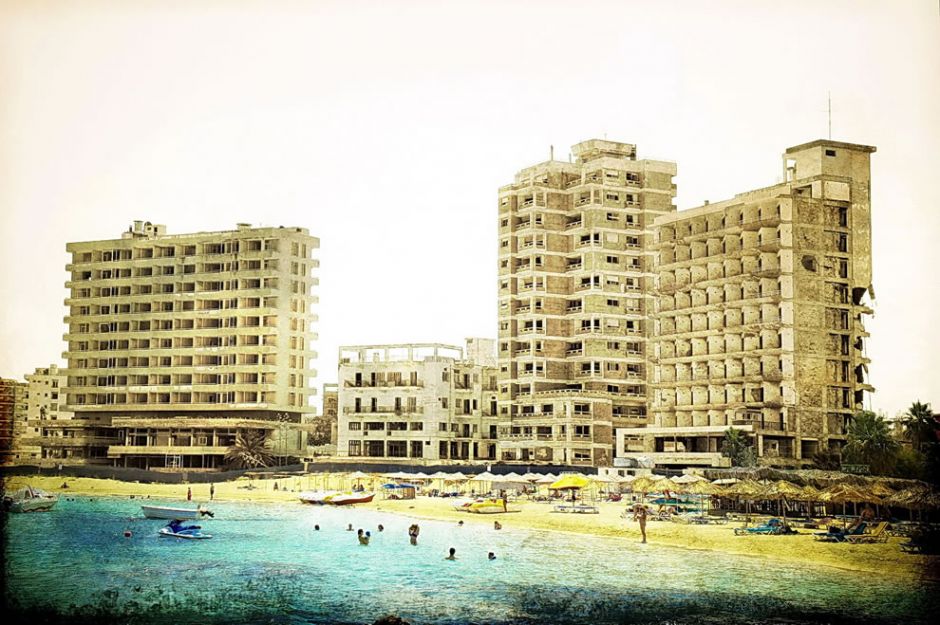From Beach Resort Paradise to Rotting Ruins: Crumbling Mediterranean Ghost Town (14 pictures)
Imagine yourself on an island in the Mediterranean with beautiful white sand beaches, warm weather, fantastic places to shop, fine dining, and modern luxurious hotels that are frequented by the vacationing rich and famous. Then boom, the island is invaded and you must flee for your life from that slice of paradise. From tourist hotspot to ghost town, it’s a No Man’s Land with ruins that are rotting away.
This happened: the island is Cyprus, the year was 1974, and the area was known as Varosha, a section of Famagusta. The crumbling vacation resort is a “forbidden zone” that has been stuck in time and slowly decaying for nearly 40 years. Sure, you could cross the “Buffer Zone” to see what that moment in time looked like when people fled and Varosha was abandoned, but if caught . . . trespassers will be shot on the spot.
















